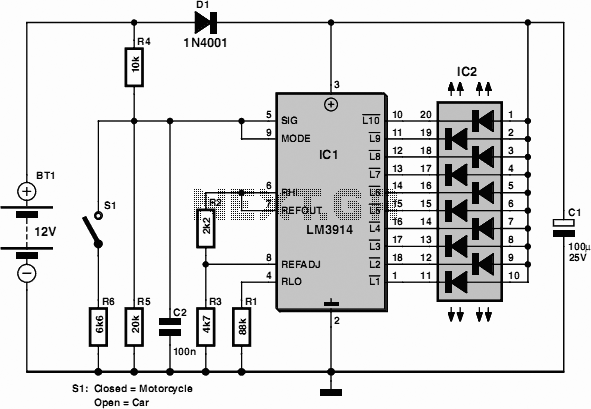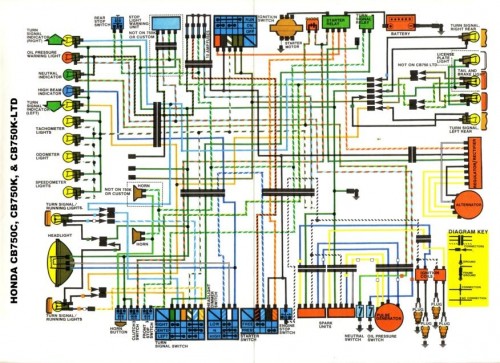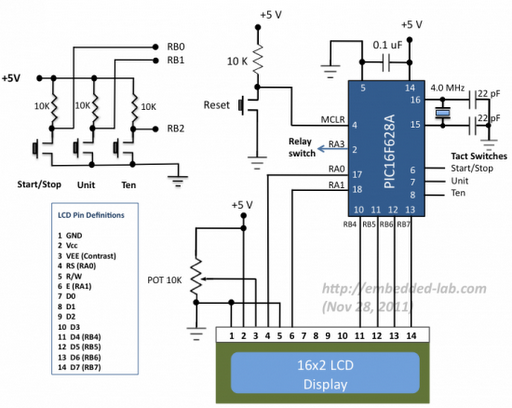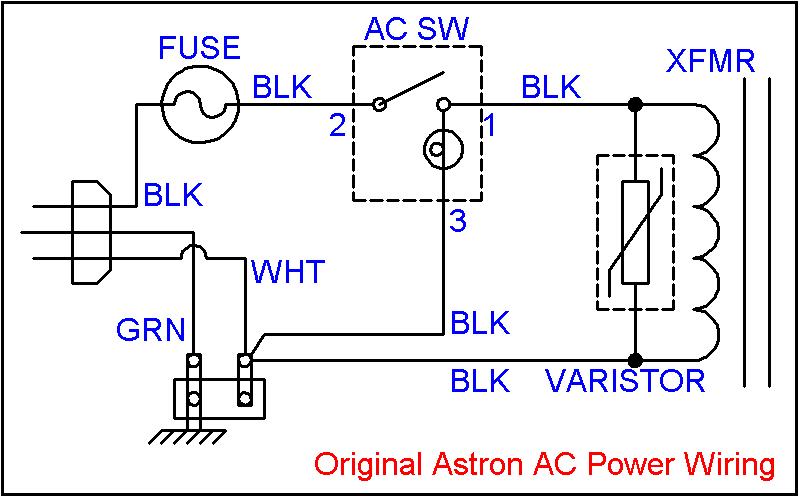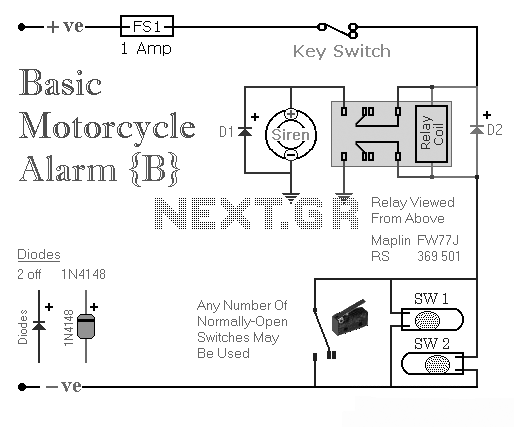
Modification of a telescope motor controller for autoguiding
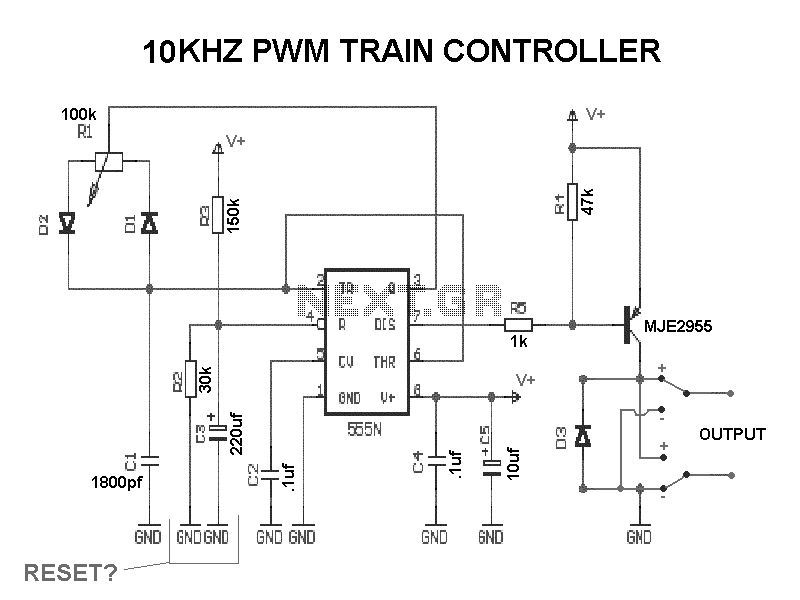
This page outlines the modifications made to a SkyWatcher dual-axis EQ5/EQ4 motor controller to enable autoguiding via the parallel port from a PC. The modification allows the RA+, RA-, Dec+, and Dec- buttons to be activated from the PC using the parallel port and an inexpensive integrated circuit (IC). The modification has been tested with K3CCDTools v3.0.1, yielding positive results. There is a potential for this modification to work with other controllers, particularly the SkyWatcher EQ3-2 and the Orion "TrueTrack" controllers, which appear to be quite similar to the modified version. A procedure for verifying the compatibility of this modification with different controllers is provided. Users are encouraged to share their success stories regarding modifications to other controller types (contact information is available at the bottom of the page). It is important to note that users proceed at their own risk, as there is a possibility of damaging equipment by following the outlined procedures. The navigation buttons on the EQ5/EQ4 controller operate as switches that close (connect) when pressed. Each switch connects to ground on one side and to the microcontroller on the other side (located on the main circuit board). The microcontroller inputs are connected to +5V via pull-up resistors. When a switch is pressed, the microcontroller detects a change from +5V to ground, which alters the signals sent to the stepper motors accordingly. The modification utilizes four out of seven available driver circuits within a ULN2003 IC. When a signal from the parallel port (typically a DSUB-25 connector) is activated, the corresponding ULN2003 output pin is grounded via an internal transistor. This output pin connects to the microcontroller side of one of the navigation buttons, pulling the corresponding input signal to ground. Consequently, the PC program controlling the parallel port can navigate the motors as if a user were manually pressing the buttons. If the parallel port cable is disconnected, the ULN2003 will function as if the input pins were grounded, resulting in no impact from the modification. The pushbuttons can still be used while the computer is connected. If the computer attempts to guide the telescope in one direction while a button for another direction is pressed, the result will be akin to pressing two buttons simultaneously. Images of the controller are provided below. The label on the back indicates "DUAL EQ4," but the controller is compatible with both EQ4 and EQ5 mounts. The white cables on the left connect to the RA and Dec motors, while the gray cable transmits guiding signals from the PC parallel port. The socket for connecting the 6V battery pack is also visible. An internal view of the controller reveals a circuit board with four pushbuttons at the top, serving as the keyboard, with the main circuit board below housing the microcontroller and motor driver circuitry. To access the controller, the white buttons can be removed using a screwdriver, and screws must be taken out, including the one securing the 6V power connector. (The blue and yellow wires exiting the box with the PC cable are associated with another project. Additionally, the pushbutton and switch on the right belong to a different project and should be disregarded.) The keyboard can be unscrewed and rotated, as shown in the accompanying image. The modification circuit is located at the bottom left, where a surface mount version of the ULN2003 has been soldered onto the board.
The modification of the SkyWatcher EQ5/EQ4 motor controller to enable autoguiding through a PC's parallel port represents a significant enhancement in telescope control. This integration allows for precise adjustments in the Right Ascension (RA) and Declination (Dec) axes, facilitating long-exposure astrophotography and tracking celestial objects with increased accuracy. The use of the ULN2003 IC in this modification is particularly advantageous, as it provides a reliable interface between the parallel port signals and the microcontroller inputs, ensuring that the manual controls remain functional even when the PC is connected.
The design employs pull-up resistors to maintain a stable high signal on the microcontroller inputs when switches are not engaged. This approach minimizes noise and false triggering, enhancing the reliability of the system. The ability to simultaneously use manual buttons and computer control is a significant feature, allowing for flexibility during operation. Users can manually override the computer's commands, an essential function during critical moments of observation or when adjustments are necessary.
Furthermore, the potential compatibility of this modification with other motor controllers expands its utility beyond the EQ5/EQ4 models, making it a valuable resource for a broader audience of amateur astronomers. The documentation encourages experimentation and sharing of results, fostering a community of innovation and improvement in telescope automation.
In conclusion, the outlined modification not only enhances the functionality of the SkyWatcher EQ5/EQ4 motor controller but also exemplifies the integration of modern technology with traditional astronomical equipment, paving the way for more accessible and efficient astronomical observations.This page describes how I have modified my SkyWatcher dual axis EQ5/EQ4 motor controller to allow autoguiding through the parallel port from a PC. The modification allows the RA+, RA-, Dec+ and Dec- buttons to be activated from the PC via the parallel port and a cheap IC.
I have tested the modification together with K3CCDTools v3. 0. 1 with good res ults (see bottom of this page). There is a good chance that the modification will also work with other controllers. In particular, the SkyWatcher EQ3-2 and the Orion "TrueTrack" controllers seem to be almost identical to the one I modified. A procedure for verifying if the modification shown here is likely to work with a different controller is described here.
I would be glad to hear from you if you have success with modifying a different type of controller, (e-mail address at the bottom of this page), and I would be glad to include the information (and credits) here. Warning: You may use the following information on your own risk. There is always a risk that your equipment can be damaged when you follow procedures like the ones described below.
The author is not responsibility for any damage to your computer, motor controller or other equipment. The navigation buttons on the EQ5/EQ4 controller keyboard are implemented as switches which are closed (become connected) when they are pressed down.
Each switch is connected to ground on one side and to the microcontroller on the other side (on the main circuit board). The inputs to the microcontroller are also connected to +5V via pull-up resistors. When the switch is pressed down the microcontroller senses that the corresponding input signal changes from +5 V to ground, and the signals to the stepper motors are changed accordingly.
The modification uses four out of seven available driver circuits inside an IC called ULN2003 ( datasheet ). When one of the signals from the parallel port (usually a DSUB-25 connector) goes high, the corresponding ULN2003 output pin is shorted to ground (pin 8) via an internal transistor.
The ULN2003 output pin is connected to the microcontroller side of one of the navigation buttons, and the corresponding input signal to the microcontroller is therefore also pulled to ground. The PC program that controls the parallel port can therefore navigate with the motors in the same way as a person manually operating the buttons.
If the parallel port cable is disconnected the ULN2003 will operate as if the input pins were grounded, and there should be no effect of the modification. It is also possible to use the pushbuttons while the computer is connected. If the computer tries to guide the telescope in one direction while you press the button for another direction the effect will be the same as if you pressed two buttons at the same time.
Pictures of the controller are shown below. The label on the back says "DUAL EQ4", but the controller is sold for use either with EQ4 or EQ5. The white cables seen on the left are connected to the RA and Dec motors. The gray cable transmits the guiding signals from the PC parallel port. You can also see the socket for connecting the 6V battery pack. Above you see the inside of the controller. A circuit board with four pushbuttons is mounted on the top, serving as the keyboard. The main circuit board is mounted below with the microcontroller and driver circuitry for the motors. To open the controller you pull out the white buttons with the tip of a screwdriver and remove the screws, including the upper screw holding the 6V power connector.
(The blue and yellow wires coming out of the box together with the PC cable belongs to another project. Also the pushbutton and switch at the right hand side belong to the other project. Please ignore. ) The keyboard can be unscrewed and turned around, as in the picture below. The modification circuit is seen at the bottom left. A surface mount version of the ULN2003 was soldered onto a 🔗 External reference
The modification of the SkyWatcher EQ5/EQ4 motor controller to enable autoguiding through a PC's parallel port represents a significant enhancement in telescope control. This integration allows for precise adjustments in the Right Ascension (RA) and Declination (Dec) axes, facilitating long-exposure astrophotography and tracking celestial objects with increased accuracy. The use of the ULN2003 IC in this modification is particularly advantageous, as it provides a reliable interface between the parallel port signals and the microcontroller inputs, ensuring that the manual controls remain functional even when the PC is connected.
The design employs pull-up resistors to maintain a stable high signal on the microcontroller inputs when switches are not engaged. This approach minimizes noise and false triggering, enhancing the reliability of the system. The ability to simultaneously use manual buttons and computer control is a significant feature, allowing for flexibility during operation. Users can manually override the computer's commands, an essential function during critical moments of observation or when adjustments are necessary.
Furthermore, the potential compatibility of this modification with other motor controllers expands its utility beyond the EQ5/EQ4 models, making it a valuable resource for a broader audience of amateur astronomers. The documentation encourages experimentation and sharing of results, fostering a community of innovation and improvement in telescope automation.
In conclusion, the outlined modification not only enhances the functionality of the SkyWatcher EQ5/EQ4 motor controller but also exemplifies the integration of modern technology with traditional astronomical equipment, paving the way for more accessible and efficient astronomical observations.This page describes how I have modified my SkyWatcher dual axis EQ5/EQ4 motor controller to allow autoguiding through the parallel port from a PC. The modification allows the RA+, RA-, Dec+ and Dec- buttons to be activated from the PC via the parallel port and a cheap IC.
I have tested the modification together with K3CCDTools v3. 0. 1 with good res ults (see bottom of this page). There is a good chance that the modification will also work with other controllers. In particular, the SkyWatcher EQ3-2 and the Orion "TrueTrack" controllers seem to be almost identical to the one I modified. A procedure for verifying if the modification shown here is likely to work with a different controller is described here.
I would be glad to hear from you if you have success with modifying a different type of controller, (e-mail address at the bottom of this page), and I would be glad to include the information (and credits) here. Warning: You may use the following information on your own risk. There is always a risk that your equipment can be damaged when you follow procedures like the ones described below.
The author is not responsibility for any damage to your computer, motor controller or other equipment. The navigation buttons on the EQ5/EQ4 controller keyboard are implemented as switches which are closed (become connected) when they are pressed down.
Each switch is connected to ground on one side and to the microcontroller on the other side (on the main circuit board). The inputs to the microcontroller are also connected to +5V via pull-up resistors. When the switch is pressed down the microcontroller senses that the corresponding input signal changes from +5 V to ground, and the signals to the stepper motors are changed accordingly.
The modification uses four out of seven available driver circuits inside an IC called ULN2003 ( datasheet ). When one of the signals from the parallel port (usually a DSUB-25 connector) goes high, the corresponding ULN2003 output pin is shorted to ground (pin 8) via an internal transistor.
The ULN2003 output pin is connected to the microcontroller side of one of the navigation buttons, and the corresponding input signal to the microcontroller is therefore also pulled to ground. The PC program that controls the parallel port can therefore navigate with the motors in the same way as a person manually operating the buttons.
If the parallel port cable is disconnected the ULN2003 will operate as if the input pins were grounded, and there should be no effect of the modification. It is also possible to use the pushbuttons while the computer is connected. If the computer tries to guide the telescope in one direction while you press the button for another direction the effect will be the same as if you pressed two buttons at the same time.
Pictures of the controller are shown below. The label on the back says "DUAL EQ4", but the controller is sold for use either with EQ4 or EQ5. The white cables seen on the left are connected to the RA and Dec motors. The gray cable transmits the guiding signals from the PC parallel port. You can also see the socket for connecting the 6V battery pack. Above you see the inside of the controller. A circuit board with four pushbuttons is mounted on the top, serving as the keyboard. The main circuit board is mounted below with the microcontroller and driver circuitry for the motors. To open the controller you pull out the white buttons with the tip of a screwdriver and remove the screws, including the upper screw holding the 6V power connector.
(The blue and yellow wires coming out of the box together with the PC cable belongs to another project. Also the pushbutton and switch at the right hand side belong to the other project. Please ignore. ) The keyboard can be unscrewed and turned around, as in the picture below. The modification circuit is seen at the bottom left. A surface mount version of the ULN2003 was soldered onto a 🔗 External reference

